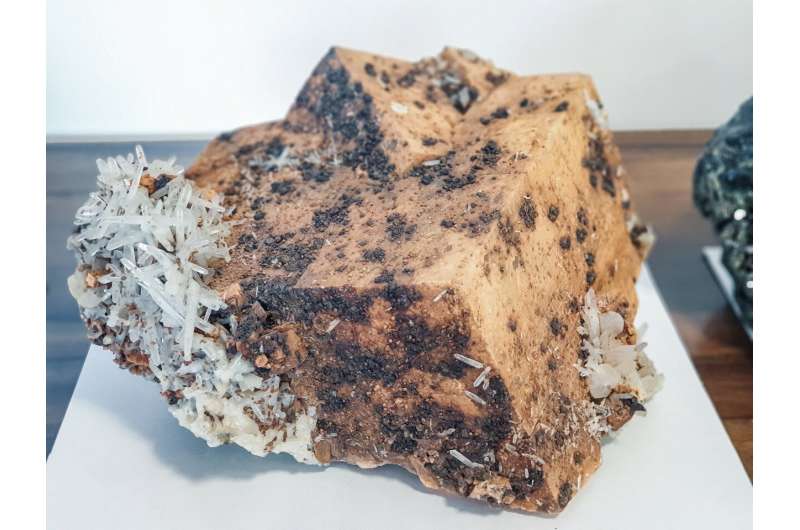This article has been reviewed according to Science X's editorial process and policies. Editors have highlighted the following attributes while ensuring the content's credibility:
fact-checked
peer-reviewed publication
trusted source
proofread
Looking for lithium-bearing pegmatites

The commercial importance of lithium is ever-growing, and its production is globally dominated by lithium-cesium-tantalum (LCT) pegmatites. These are spectacular rocks featuring impressive ultra-coarse textures, but they are very elusive due to a combination of factors: they are small, and until a decade ago, they were often regarded as nothing more than a geological curiosity. As a result, our knowledge of LCT pegmatites from an exploration standpoint is limited, which makes them hard to find.
The starting point of mineral exploration is typically a targeted hunt for that mineral's formation environment. But while in the case of many other ores, such as copper and gold, several genetic models inform our search, when it comes to LCT pegmatites, the available models are limited. Lot Koopmans et al. aim at lifting the veil that has thus far been enshrouding lithium exploration. "Knowing that certain environments have the right geological history to enable LCT pegmatite formation is paramount to finding them," he explains.
Two classic hypotheses explain the genesis of pegmatites as the product of either extreme fractionation of a parental granitic body or low-degree partial melting of a metamorphic rock. Koopmans et al. used petrological modeling to evaluate whether significant lithium enrichment on the scale of an economic deposit could be achieved during these processes and found that it could not—at least not starting with common rock compositions.
While studying pegmatites in Zimbabwe and the U.S., Koopmans et al. kept finding field evidence that just couldn't be explained through the classic models. How else can LCT pegmatites form? The authors did not come across any satisfactory alternative explanation in the literature.
From stimulating discussions at discipline-specific conferences, they got to work synthesizing their observations and thermodynamic calculations into a novel, multi-stage petrogenetic model: first, metasedimentary rocks undergo partial melting during prograde metamorphism, producing a granitic melt modestly enriched in lithium that crystallizes as a granitic intrusion; at a later time, this granite is then remelted, forming a highly enriched melt that ultimately crystallizes as a Li-rich pegmatite.
This proposed mechanism satisfies some geochemical and geochronological constraints that previous models could not, providing an efficient mechanism to increase lithium enrichment and generate economic lithium deposits. Koopmans et al.'s work was just published in Geology.
"Finding the proof of concept is the next step, and that comes down to finding the right field area and method to study these pegmatite-forming processes—perhaps incorporating novel isotopic systems," says Koopmans. "Hopefully fellow geologists can now go to the field, find pegmatites, and gather the evidence to test whether they have formed according to the model we proposed."
More information: Lot Koopmans et al, The formation of lithium-rich pegmatites through multi-stage melting, Geology (2023). DOI: 10.1130/G51633.1
Journal information: Geology
Provided by Geological Society of America





















